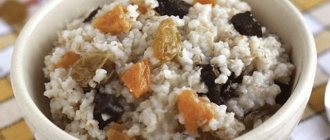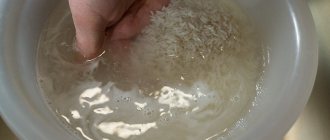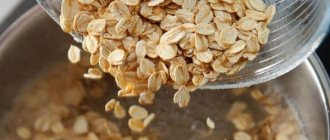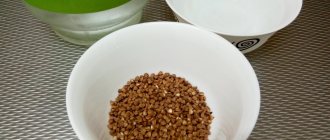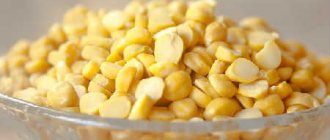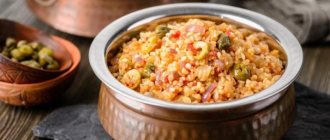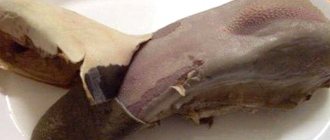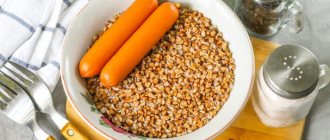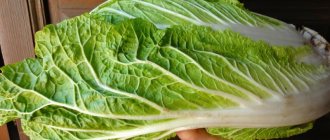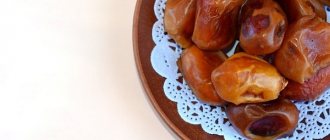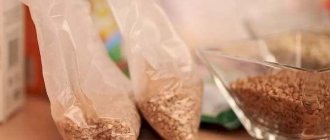(Photo: pixabay.com)
Cereals are the most popular products. They are inexpensive, very beneficial for the body, because they contain many useful substances, especially fiber. And the most popular variety is buckwheat, which many eat almost every day. But not everyone knows that this grain should be washed - in this case, the prepared dish will be even healthier.
Preparing buckwheat for cooking
To make the cereal edible and palatable, while remaining healthy, it is prepared in one of the following ways:
- They cook. At the same time, the cereal becomes tender and soft.
- Fry, and then boil, then the buckwheat will be denser and more crumbly.
- Steam in hot water. As a result, the cereal remains dense and crumbly.
- Leave overnight in kefir. In this form, the grains remain coarse, and saturation occurs quickly.
- Sprouted in water to increase usefulness.
Regardless of the cooking method, it is recommended to wash buckwheat. The cereal will be finally cleared of dust and sand particles, small pebbles and other inedible inclusions.
Usually the manufacturer warns about the need for rinsing, but sometimes there are no preparation recommendations. This does not mean that the cereal is perfectly clean. It needs to be washed “by default”.
INTERESTING FACT: ENVIRONMENTALLY FRIENDLY
- ✅ Buckwheat is one of the few plants that scientists have not yet managed to genetically modify. When growing it, there is no need to use pesticides, nitrates and herbicides - it is very resistant to diseases and develops well even without fertilizers. Thus, it is one of the most environmentally friendly crops.
- ✅ Buckwheat is equated to meat in terms of the content of essential amino acids and protein, and it is absorbed faster and better. In terms of the biological value of the amino acid series, it is superior to barley, wheat and corn and is close to chicken eggs, and its protein is most similar to complete animal protein. Thanks to this, buckwheat can be used as an alternative to meat in vegetarian cuisine.
- ✅ High folic acid content makes cereal an effective natural immunostimulant.
Where does the garbage come from in buckwheat?
The quality of buckwheat is determined by GOST R 55290-2012. According to the standard, cereals are sold in the form of steamed or unsteamed buckwheat kernels (whole grains) and podel (cracked buckwheat kernels). The product is valued for its absence of pesticides and genetic modification, but the kernels require additional purification.
According to established standards, finished packaged cereals may contain:
- Broken kernels, flour. These are small particles that do not pass through the woven sieve No. 08 (8 holes per 1 cm2). Such impurities will not harm your health, but with them the finished porridge will be viscous.
- Grains in a fruit shell. They remain hard for a long time and spoil the consistency of the dish.
- Particles of sand, ore, small earth lumps, slag.
- Litter of organic origin: buckwheat husks, particles of cereal stems and other nearby plants.
- Poor quality kernels. This includes rotten, moldy seeds in the package.
We recommend: Encyclopedia of frying pans: how one differs from another
All cereals, especially loose cereals, must be carefully inspected. It may contain black grains of a weed plant - hop ford. They must be removed manually.
Even cereals intended for baby food may contain the listed types of contaminants. Exceptions are admixtures of third-party and spoiled grains.
In premium buckwheat, the permissible value of impurities is 0.3%; There are 3 varieties in the cereal - 2 times more. To eliminate them, buckwheat must be thoroughly washed.
Contraindications
Like any dietary restriction, this diet has a number of contraindications:
- Pregnancy;
- Kidney failure;
- Diseases of the gastrointestinal tract.
People with hypertension (risk of low blood pressure) and diabetics should be careful.
Otherwise, the buckwheat diet has a gentle effect due to the content of complex carbohydrates that fill you with energy for a long time: the body does not starve or become depleted.
How to properly wash buckwheat?
To prevent organic and mineral debris from getting into your porridge, you must:
- Sort through the grains. Select uncleaned kernels and large foreign inclusions. It is most convenient to visually inspect the product in a deep, large-diameter container, distributing the grain along the bottom.
- Start rinsing by directing a stream of water into the container. When small particles float to the surface, drain the water. Then rinse the buckwheat again. Repeat the process until the water becomes clear. To ensure that no impurities remain at the bottom, during the washing process you should stir the cereal with smooth circular movements.
- To eliminate flour, you can wash the buckwheat in a fine sieve.
You should not thoroughly grind the kernels, otherwise they will be damaged and the porridge will not be crumbly.
INTERESTING FACT; BUCKWHEAT IS NOT A CEREAL!
The calorie content of buckwheat is relatively high, but all the substances it contains are completely absorbed by the body, and the proteins are easily digestible, which is why buckwheat is considered the best dietary product.
Buckwheat is not a cereal crop, so all parts of the plant are rich in flavonoids (including quercetin and rutin). During germination, the set and quantity of flavonoids increases.
Flavonoids have antioxidant, anti-radiation, antispasmodic, anti-ulcer, antitumor, anti-inflammatory, wound-healing, hypotensive, estrogenic, bactericidal, diuretic and other properties important for our health.
Do I need to wash buckwheat before frying?
Calcined buckwheat, which is brown in color, does not need to be fried. All you have to do is wash it and start cooking. Green kernels, which are considered the most useful, are subjected to additional heat treatment.
When fried, the cereal acquires a pleasant aroma. If you wash it the day before, the moisture level of buckwheat will increase, calcination will partially turn into cooking, after which the grains will become semi-ready. For this reason, housewives prefer to do without washing at all, and then the impurities remain in the porridge.
To cook green buckwheat correctly, you need:
- Fry the cereal in a dry frying pan for 4-5 minutes. Readiness is determined by the appearance of a golden hue.
- Pass the cereal through a fine sieve.
- Rinse the product, add clean water and cook until tender.
We recommend: Dangerous items at home for children: what to remove and what to teach how to handle?
You can fry buckwheat for future use. Ready golden kernels are stored in a dry, dark place and washed immediately before cooking.
Indications for cleaning
The liver performs five main functions: ensures normal digestion, regulates blood volume, synthesizes plasma proteins, allows vitamins and carbohydrates to be absorbed, and removes waste products.
Waste and toxins that come from food and drinks, unfavorable environmental conditions, and poor nutrition inhibit liver function. Digestive processes are disrupted: bile secretion slows down, the risk of developing pathogenic flora and stone formation increases, and with the growth of cholesterol plaques and fractions, the organ approaches fatty degeneration - hepatosis. Liver cleansing with buckwheat is indicated for the following symptoms:
skin pigmentation;- dry skin;
- heaviness in the stomach after eating;
- bitterness, metallic taste in the mouth;
- coated tongue, yellow coating;
- bloating, “bubbling” in the stomach, increased gas formation
- belching with an unpleasant aftertaste;
- feeling of discomfort in the right hypochondrium.
The advantages of the diet include its availability, good tolerance, absence of side effects and allergic reactions.
How to wash green buckwheat before sprouting?
Buckwheat with small sprouts is considered the most useful. It contains 76 times more antioxidants than rice. “Live” cereal increases hemoglobin and normalizes the functioning of the nervous system. It should be prepared like this:
- Rinse green buckwheat thoroughly and remove any floating particles;
- Spread the cereal in a 2-centimeter layer, cover with clean water for 3 hours;
- place the cereal in a sieve and rinse under strong running water;
- pour into a container for germination, cover with several layers of damp gauze and cover with a lid, ensuring air access;
- put the buckwheat in a warm place (18–24 ◦C) for 12–24 hours.
The appearance of small sprouts means that the cereal is ready to eat. It can be eaten as a side dish or added to a salad.
Regardless of the cooking method and the quality of the grain, buckwheat needs to be washed. This will make it better, tastier, and the risks of foreign impurities entering the body will be completely eliminated.
INTERESTING FACT: BUCKWHEAT IS AGAINST CANCER
Scientists have identified a large amount of antioxidant substances in buckwheat that fight cancer cells and prevent the development of oncology. Cereals help raise the level of hemoglobin in the blood, strengthen immune defense, and remove toxins, which in the case of cancer allows one to achieve positive results.
Worldwide research shows that dietary fiber present in buckwheat has anti-carcinogenic properties and prevents the growth and metastasis of cancer cells, especially in the mammary gland. And the risk of hormone-dependent cancer formation, thanks to plant lignans, is reduced by 50%, which has also been experimentally proven. Eating buckwheat is an excellent prevention of rectal tumors.
The fiber contained in cereals cleanses the intestinal walls and supports its full functioning, which prevents the accumulation of carcinogens and other “garbage”.
Advice from nutritionists
If the diet period exceeds 10 days, it is recommended to divide this time into 3 parts. Cleansing the body is carried out in the first and last parts. Medium – rest time.
The buckwheat diet is not complete without drinking plenty of fluids, which maintains water balance in the body. You can choose a drink at your discretion: water, green tea, still mineral water, herbal decoction. You should drink approximately 1.4–1.6 liters of liquid per day.
To get lasting results, it is important to properly prepare for cleansing, otherwise the body, having experienced stress, will begin to store weight in reserve. A couple of days before the course, you should remove sweets, fatty and fried foods from your diet. Before starting the diet, do an enema. The correct way out of the diet also plays an important role for effective cleansing of the body: introduce regular foods into the diet gradually.
Sticking to a strict menu consisting of buckwheat is not easy. If you feel hungry, it is better to switch to a gentle diet.
Symptoms of slagging
Harmful substances accumulate in the gastrointestinal tract and cause intoxication of the entire body. Over time, these deposits penetrate into the blood and cause serious illness. Signs of slagging in the body are as follows:
- insomnia;
- heavy sweating;
- chills;
- irregular bowel movements;
- constipation or diarrhea;
- flatulence;
- bad breath;
- allergic manifestations on the skin;
- Bad mood;
- surges in blood pressure.
The buckwheat diet eliminates the above problems, improves overall well-being, normalizes blood circulation, and strengthens the human immune system.
Restrictions during cleaning
Buckwheat fasting days should be carried out no more than once every 4 months. The best option is 2 times a year. The diet takes a maximum of 3 weeks.
Since cereal contains a high percentage of carbohydrates, the expected effect occurs after 6–8 days. You should be patient and not increase the volume of the cereal.
Reviews
Angelina, 26 years old After the birth of my child, I gained weight. Weight gained 20 kg. Thanks to the gentle version of the buckwheat diet, I lost 5 kg in a week. I will not stop at the achieved results until I lose at least 15 kg.
Marina, 31 years old I learned that buckwheat cleanses the body of toxins and waste. I ate buckwheat, which I soaked in kefir. I didn’t salt the porridge. I added a little olive oil and nuts to it. I didn't feel hungry. After half a month, my stomach shrank.
So, buckwheat grains effectively remove slagging from the body, promote weight loss, and improve overall well-being. Use the tips above and you will feel better than before.
